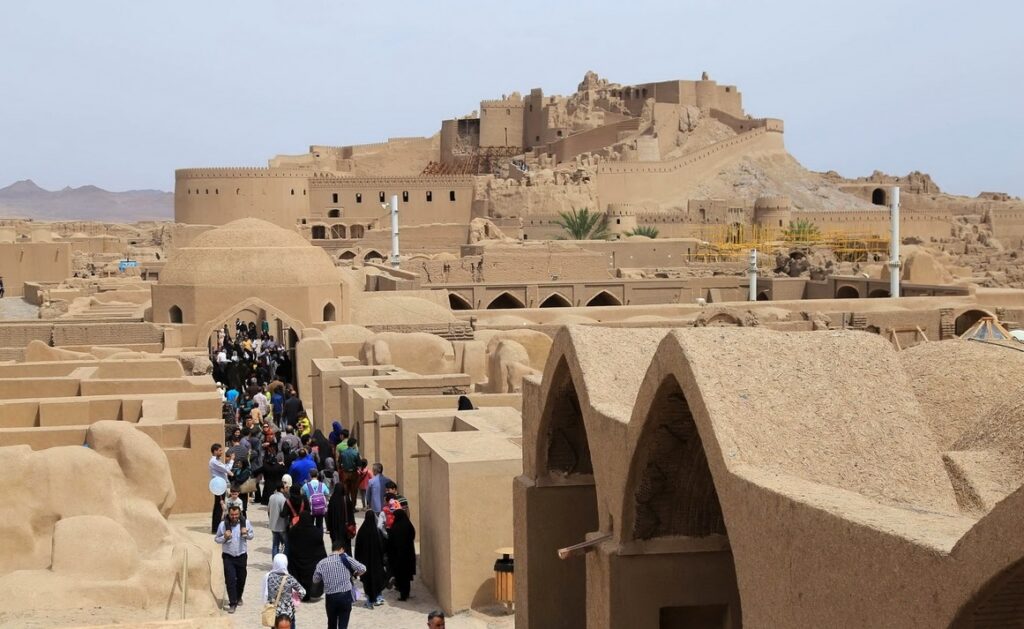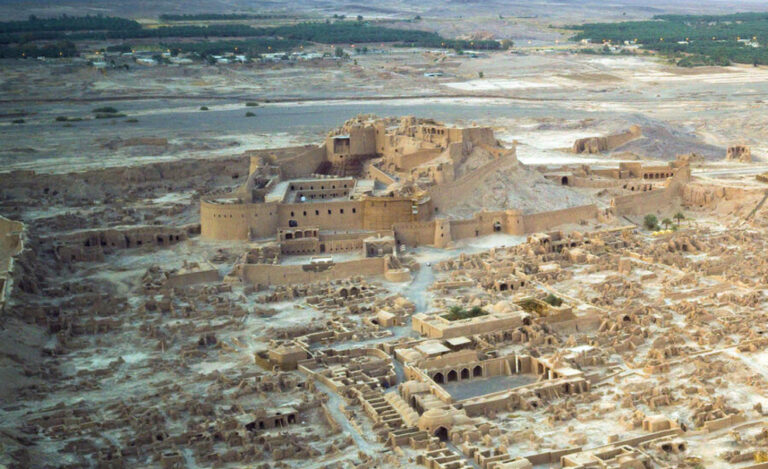
Arg-e Bam, located in Kerman Province, Iran, is the largest adobe structure in the world and one of the most remarkable examples of ancient Persian architecture. This massive citadel, built entirely from sun-dried mud bricks, dates back over 2,000 years and was a key commercial and military center during different historical periods. Despite the devastating earthquake in 2003, which caused significant damage, Arg-e Bam remains a symbol of resilience and Persian architectural ingenuity.
History of Arg-e Bam
The origins of Arg-e Bam date back to the Achaemenid period (6th–4th century BCE), but it flourished significantly during the Safavid era (16th–18th century CE). The citadel was strategically located on the Silk Road, playing a crucial role in trade and military defense. It remained an important stronghold until the late 19th century, after which it was gradually abandoned.
However, the 2003 earthquake severely damaged the site, leading to an international restoration effort to preserve this UNESCO World Heritage Site.
Architectural Features of Arg-e Bam
Arg-e Bam showcases exceptional Persian urban planning and defensive architecture. Some of its most striking features include:
1. Multi-Layered Defensive System
The citadel was protected by thick, high walls with watchtowers, creating a strong defense against potential invasions. Its labyrinth-like layout made it difficult for attackers to penetrate.
2. Advanced Adobe Construction
Built entirely from mud bricks, clay, and palm wood, Arg-e Bam is a masterpiece of sustainable architecture. Despite its fragility, the structure lasted for centuries due to innovative building techniques.
3. Complex Urban Layout
The citadel contained multiple sections, including:
- The Governor’s Quarters, located at the highest point for better defense.
- A Bazaar, reflecting the city’s commercial importance.
- A Grand Mosque and Religious Centers, emphasizing its cultural significance.
- Residential Areas, housing both nobility and ordinary citizens.
4. Sophisticated Water Management System
A key feature of Arg-e Bam was its Qanat (underground water system), which provided a continuous water supply in the harsh desert environment. This innovative system was crucial for agriculture and daily life.
Cultural and Historical Significance of Arg-e Bam
Arg-e Bam was not just a fortress; it was a thriving city, a trade hub, and a cultural center. It stood as a testament to Persian architectural mastery and was an inspiration for many other adobe structures worldwide. Despite the earthquake, its restoration and preservation efforts highlight the enduring importance of this ancient site.
Conclusion
Arg-e Bam remains one of Iran’s most iconic historical sites, representing ancient Persian engineering, defensive architecture, and urban planning. As the largest adobe structure in the world, it continues to attract historians, architects, and tourists from around the globe.


Hi there would you mind stating which blog platform you’re using?
I’m planning to start my own blog soon but I’m having a difficult time making a decision between BlogEngine/Wordpress/B2evolution and Drupal.
The reason I ask is because your layout seems different then most blogs and I’m
looking for something completely unique.
P.S Apologies for getting off-topic but I had to ask! https://menbehealth.wordpress.com/
“It depends on how you want your site to be unique. Some features must be created from scratch in terms of design, programming, and development. It’s best to consult a web developer before starting your project.”